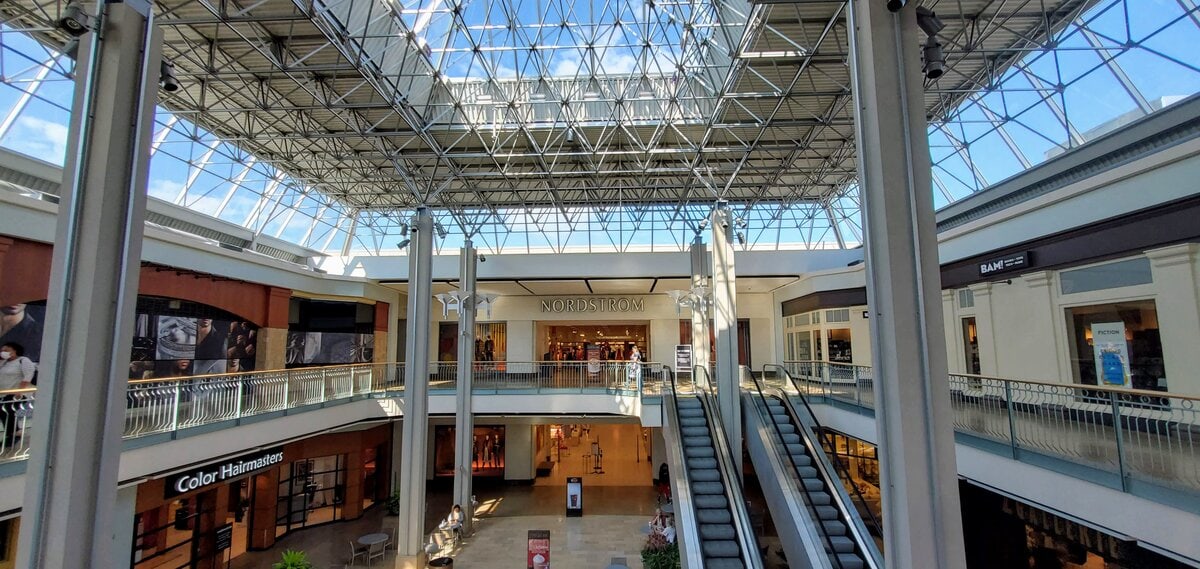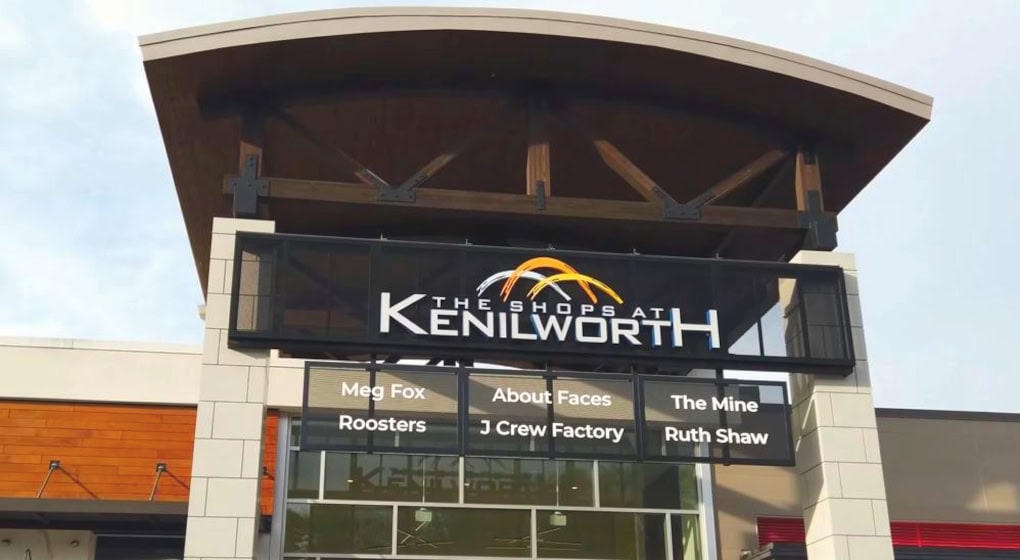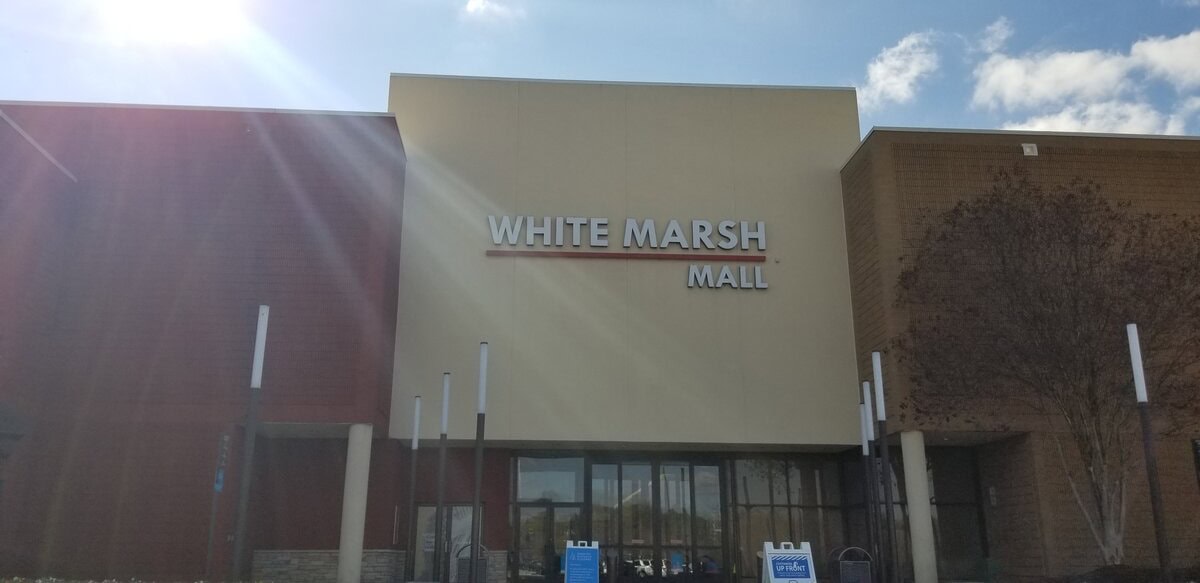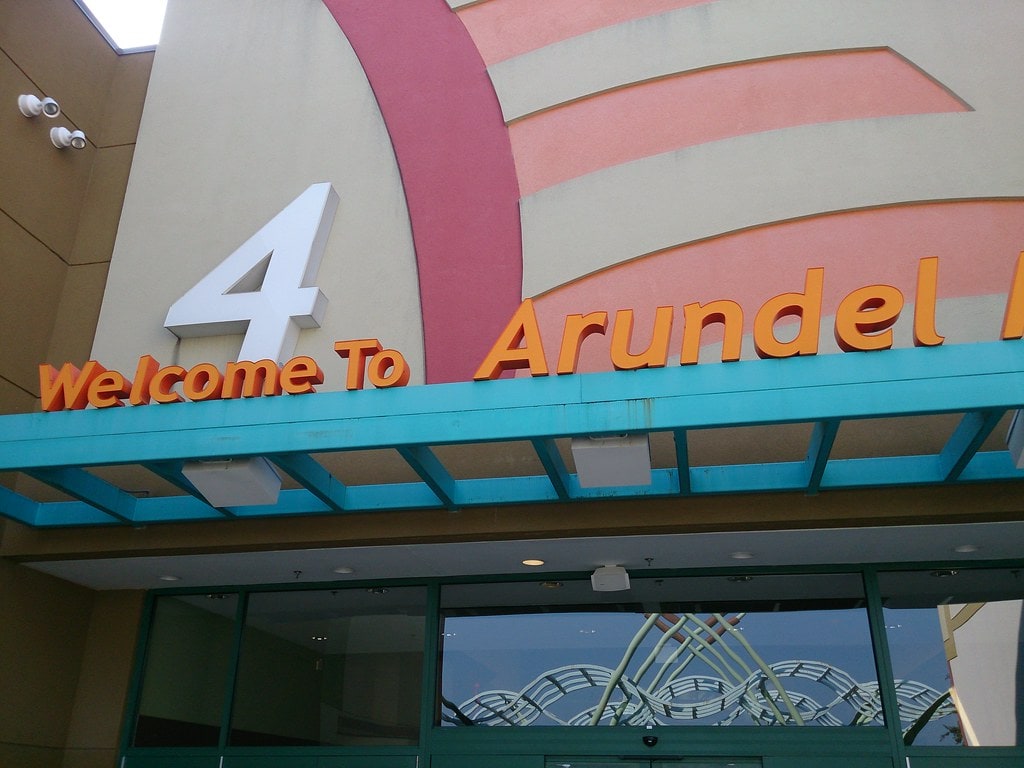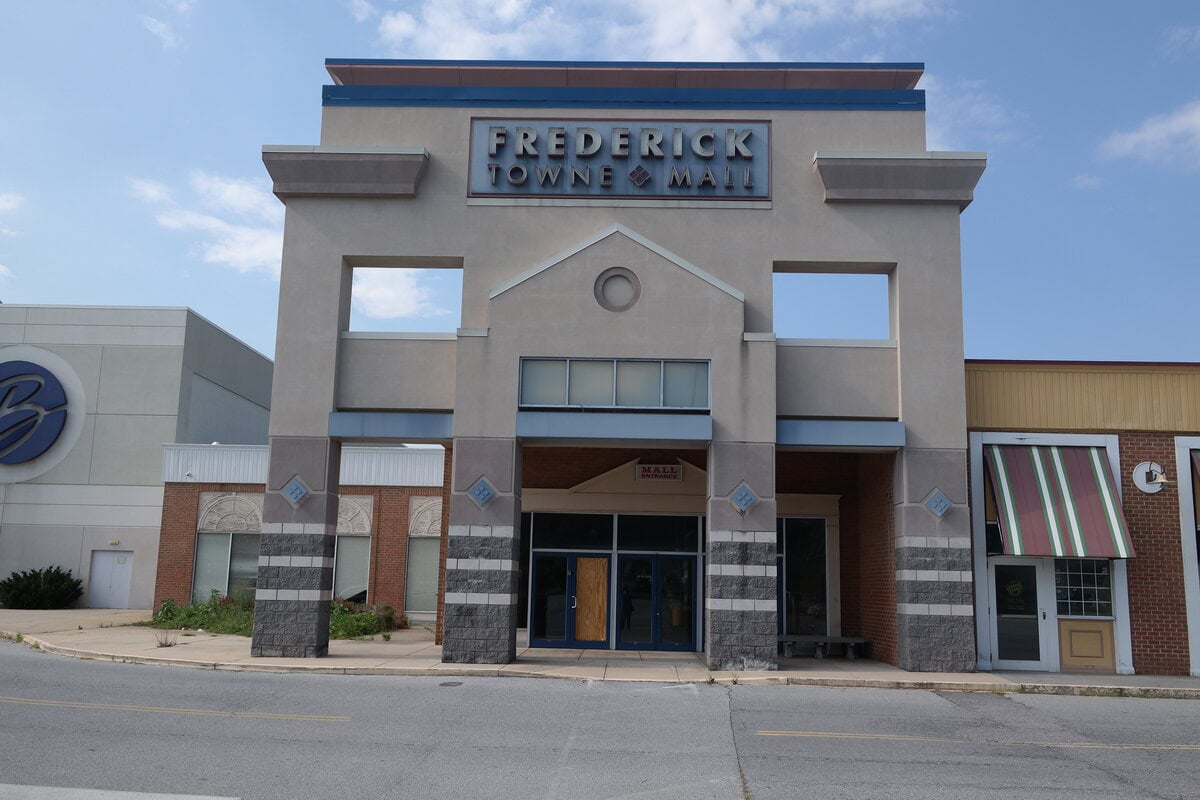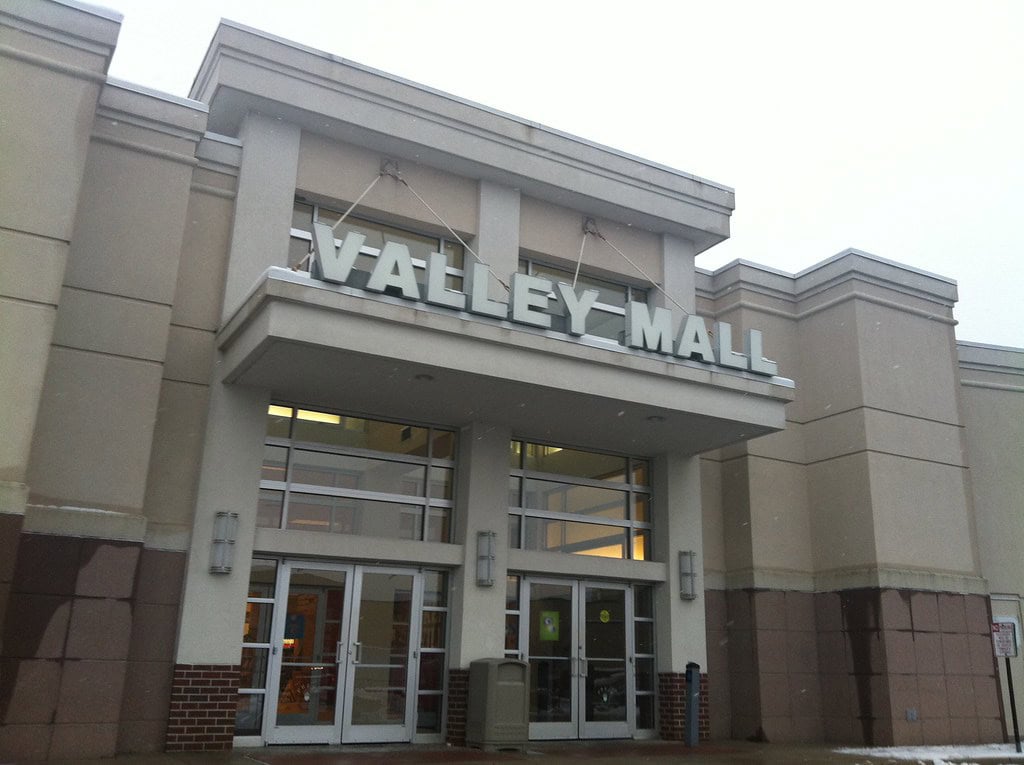Inception and Early Years (1968-1970s)
Westfield Montgomery, originally known as Montgomery Mall, opened in March 1968 in Bethesda, Maryland.
Developed as a joint venture between The May Department Stores Company and Strouse, Greenberg & Co., the mall was designed to serve the growing suburban population in Montgomery County.
Architects John Graham, Jr. and Ward and Hall handled the design, giving the structure a modern look for its time.
The mall's original branding included an owl-shaped "M" logo, a symbol meant to convey sophistication and a welcoming atmosphere.
When the doors opened, three anchor stores set the foundation for the mall's success: Hecht's, Garfinckel's, and Sears.
Alongside them, 58 smaller shops filled the corridors, offering a mix of fashion, home goods, and specialty items.
Among them was a Bond Stores outlet, a well-known chain at the time.
The mall's layout focused on accessibility, with wide walkways and open spaces that encouraged browsing.
Though the mall was a shopping hub, it also became part of an unsettling moment in history.
On March 1, 1976, William Bradford Bishop, a fugitive wanted for murder, visited the mall to purchase a ball peen hammer and a gas can.
Authorities later alleged that these items were used in a crime that made national headlines.
While this dark event had no direct connection to the mall's operations, it remains a historical footnote tied to its early years.
For visitors today looking for things to do north of Washington, DC, Westfield Montgomery remains one of the area's top shopping and entertainment hubs.
It has adapted over the decades to meet changing consumer demands.
Westfield Montgomery: Expansion and Renovations (1970s-1990s)
By the late 1970s, Montgomery Mall had grown into a retail destination, but competition from other shopping centers pushed its owners to expand.
In the mid-1970s, developers added 155,000 square feet of retail space anchored by Woodward & Lothrop.
This addition also included 40 new stores, bringing fresh retail options and increasing foot traffic.
The expansion reinforced the mall's position as a major shopping hub in Montgomery County.
The 1990s brought another wave of changes. A major renovation project was completed in October 1991, modernizing the mall's interior.
The old floors were replaced, brass railings were added, and a glass elevator became a central feature, though it was removed in 2013.
Water fountains, once a signature element, were taken out to make room for kiosks and additional seating areas, the renovation aimed to create a more open, shopper-friendly environment.
Tony Bennett performed at the mall to celebrate the reopening, drawing attention to the revamped space.
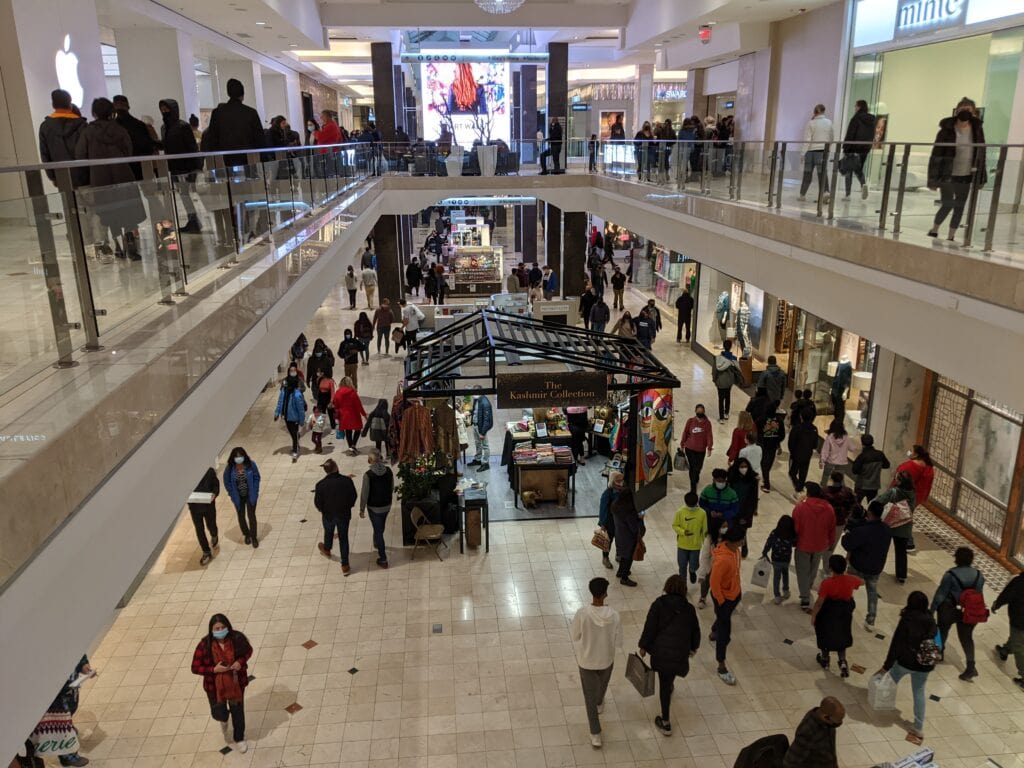
Another key development came in the early 1990s when Nordstrom joined the lineup.
The new Nordstrom store, the first in Maryland and the third in the Washington, D.C. metropolitan area, attracted high-end shoppers.
Around the same time, Crate & Barrel opened, expanding the mall's home goods selection.
These additions helped bring in a broader customer base, appealing to both everyday shoppers and those looking for premium brands.
During this period, food courts became more popular in malls nationwide, and Montgomery Mall followed the trend.
The Boulevard Cafes food court, located on the second level, opened to provide a centralized dining space.
Offering a mix of fast-food chains and casual eateries, it became a key part of the mall experience.
Ownership Changes and Rebranding (1994-2006)
The mid-1990s marked a turning point for Montgomery Mall.
In 1994, the Westfield Group, an Australian shopping center operator, acquired the property as part of a broader expansion into the U.S. retail market.
In 1998, Westfield launched a branding effort across its U.S. properties.
As part of this strategy, Montgomery Mall was renamed Westfield Shoppingtown Montgomery, the name change aligned with other Westfield properties, creating a consistent brand identity.
However, shoppers didn't embrace the new branding, and in 2005, Westfield dropped the "Shoppingtown" label, simplifying the name to Westfield Montgomery.
In 2005, Federated Department Stores acquired The May Department Stores Company, leading to a series of store rebrandings.
At Westfield Montgomery, Hecht's was rebranded as Macy's in 2006, aligning with Federated's decision to phase out the Hecht's name.
Further Developments and Challenges (2007-2018)
In September 2007, Montgomery County approved a 360,000-square-foot expansion for Westfield Montgomery.
By the time construction was completed, the mall had grown to over 1.5 million square feet, making it the fourth-largest shopping center in the region, behind Tysons Corner Center, Westfield Wheaton, and Fair Oaks Mall.
In 2014, Westfield introduced ArcLight Cinemas, a 16-screen luxury movie theater.
The addition marked a shift toward experiential retail, a strategy designed to attract more visitors beyond traditional shopping.
ArcLight brought a high-end movie-going experience with reserved seating, an upscale lobby, and premium concessions.
The mall also faced challenges during this period.
On May 6, 2016, a shooting in the mall's parking lot shocked the community.
A former federal police officer opened fire, killing one person and injuring two others.
he incident briefly disrupted business, but security measures were reinforced in the following months to reassure shoppers.
Retail shifts continued to reshape the mall. In June 2018, Westfield announced the closure of Sears, one of its original anchor stores.
The space was set to be transformed into a mixed-use open-air shopping area, a trend seen in many aging malls looking to remain competitive.
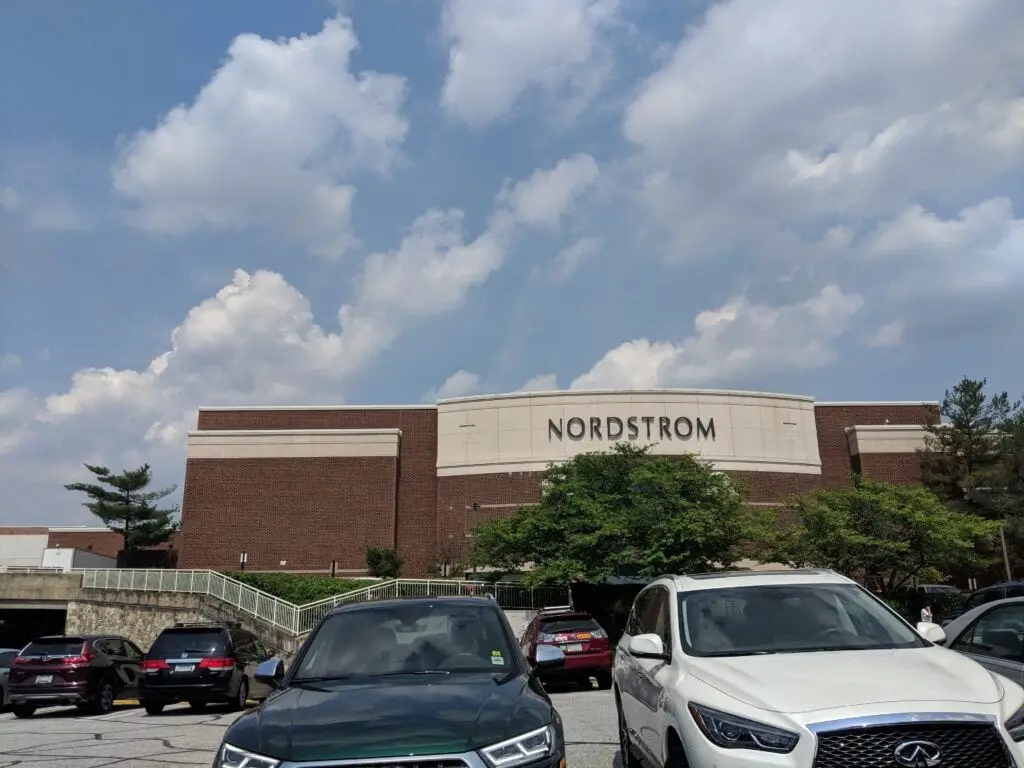
Recent Changes and Current Status (2019-Present)
In April 2021, ArcLight Cinemas closed permanently, a casualty of the COVID-19 pandemic.
However, the space didn't stay empty for long.
In February 2022, AMC Theatres took over the lease, reopening the cinema in March 2022.
The transition brought in a well-known brand and reassured visitors that movie-going remained part of the mall's draw.
Westfield Montgomery has also focused on community engagement in recent years.
In February 2024, the mall partnered with Montgomery Parks to honor Black History Month, offering free entry to the Josiah Henson Museum and Park.
This kind of collaboration shows an effort to position the mall as more than just a shopping destination.
In October 2024, reports indicated that the mall's owner secured a two-year extension on a $350 million loan after failing to repay the debt on time.
This development underscores the broader financial difficulties facing retail property owners.
Despite these hurdles, the mall continues to attract new tenants.
In October 2024, the mall announced the addition of several prominent retailers.
Tory Burch, Abercrombie & Fitch, and Carter's were slated to open in November 2024, with UNIQLO planning a mid-2025 debut.
These brands aim to enhance the mall's appeal to a diverse shopper base.
In January 2025, Garage, a Montreal-based fashion retailer, announced plans to open a store in the space previously occupied by Aeropostale.
As of 2025, the mall's major anchor stores include Nordstrom, Macy's, Macy's Home, and AMC Theatres.
The mall remains a central part of Bethesda, Maryland's retail and entertainment scene, adapting to shifts in consumer demand while maintaining its status as a longtime commercial hub.
In recent years, Unibail‑Rodamco‑Westfield secured county approval for a multi-phase plan that adds nearly 700 residential units, a hotel, fitness center, open-air promenades, and pedestrian-friendly "woonerf" streets while redeveloping the site of the former Sears store.

